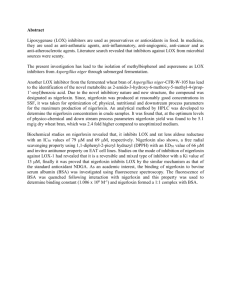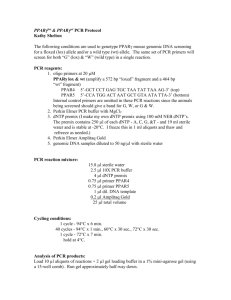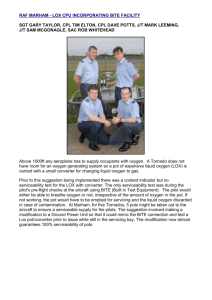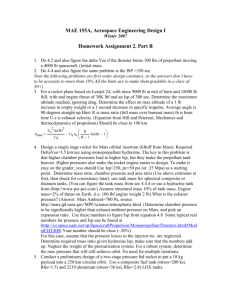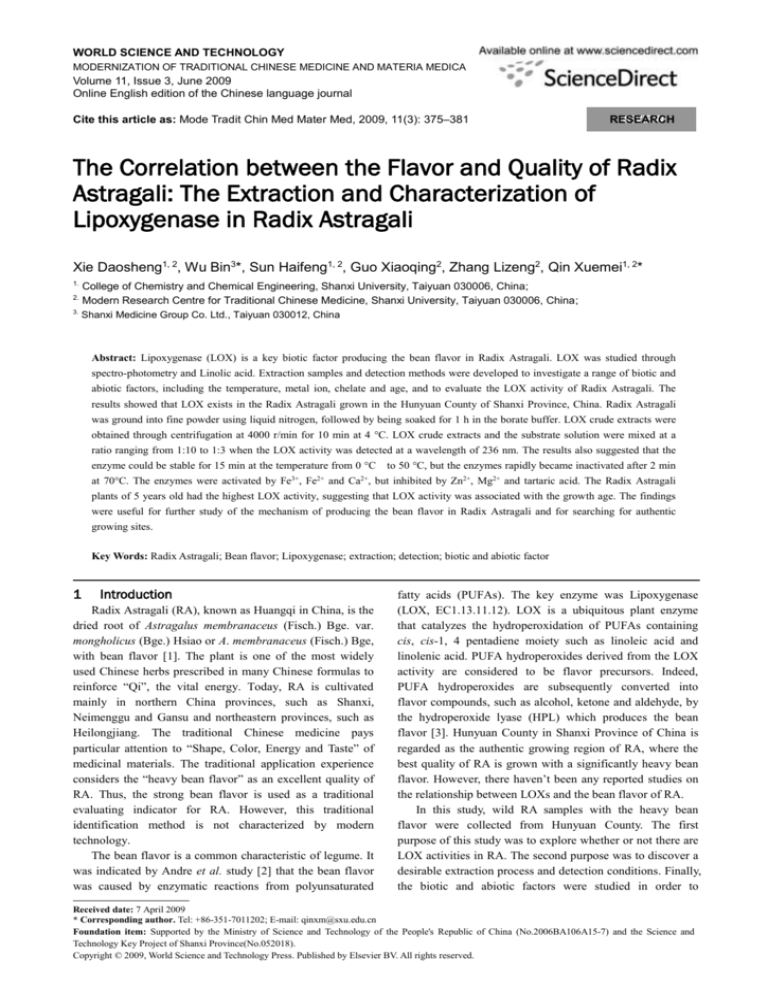
WORLD SCIENCE AND TECHNOLOGY
MODERNIZATION OF TRADITIONAL CHINESE MEDICINE AND MATERIA MEDICA
Volume 11, Issue 3, June 2009
Online English edition of the Chinese language journal
Cite this article as: Mode Tradit Chin Med Mater Med, 2009, 11(3): 375–381
RESEARCH
REVIEW
The Correlation between the Flavor and Quality of Radix
Astragali: The Extraction and Characterization of
Lipoxygenase in Radix Astragali
Xie Daosheng1, 2, Wu Bin3*, Sun Haifeng1, 2, Guo Xiaoqing2, Zhang Lizeng2, Qin Xuemei1, 2*
1.
2.
3.
College of Chemistry and Chemical Engineering, Shanxi University, Taiyuan 030006, China;
Modern Research Centre for Traditional Chinese Medicine, Shanxi University, Taiyuan 030006, China;
Shanxi Medicine Group Co. Ltd., Taiyuan 030012, China
Abstract: Lipoxygenase (LOX) is a key biotic factor producing the bean flavor in Radix Astragali. LOX was studied through
spectro-photometry and Linolic acid. Extraction samples and detection methods were developed to investigate a range of biotic and
abiotic factors, including the temperature, metal ion, chelate and age, and to evaluate the LOX activity of Radix Astragali. The
results showed that LOX exists in the Radix Astragali grown in the Hunyuan County of Shanxi Province, China. Radix Astragali
was ground into fine powder using liquid nitrogen, followed by being soaked for 1 h in the borate buffer. LOX crude extracts were
obtained through centrifugation at 4000 r/min for 10 min at 4 °C. LOX crude extracts and the substrate solution were mixed at a
ratio ranging from 1:10 to 1:3 when the LOX activity was detected at a wavelength of 236 nm. The results also suggested that the
enzyme could be stable for 15 min at the temperature from 0 °C
to 50 °C, but the enzymes rapidly became inactivated after 2 min
at 70°C. The enzymes were activated by Fe3+, Fe2+ and Ca2+, but inhibited by Zn2+, Mg2+ and tartaric acid. The Radix Astragali
plants of 5 years old had the highest LOX activity, suggesting that LOX activity was associated with the growth age. The findings
were useful for further study of the mechanism of producing the bean flavor in Radix Astragali and for searching for authentic
growing sites.
Key Words: Radix Astragali; Bean flavor; Lipoxygenase; extraction; detection; biotic and abiotic factor
1
Introduction
Radix Astragali (RA), known as Huangqi in China, is the
dried root of Astragalus membranaceus (Fisch.) Bge. var.
mongholicus (Bge.) Hsiao or A. membranaceus (Fisch.) Bge,
with bean flavor [1]. The plant is one of the most widely
used Chinese herbs prescribed in many Chinese formulas to
reinforce “Qi”, the vital energy. Today, RA is cultivated
mainly in northern China provinces, such as Shanxi,
Neimenggu and Gansu and northeastern provinces, such as
Heilongjiang. The traditional Chinese medicine pays
particular attention to “Shape, Color, Energy and Taste” of
medicinal materials. The traditional application experience
considers the “heavy bean flavor” as an excellent quality of
RA. Thus, the strong bean flavor is used as a traditional
evaluating indicator for RA. However, this traditional
identification method is not characterized by modern
technology.
The bean flavor is a common characteristic of legume. It
was indicated by Andre et al. study [2] that the bean flavor
was caused by enzymatic reactions from polyunsaturated
fatty acids (PUFAs). The key enzyme was Lipoxygenase
(LOX, EC1.13.11.12). LOX is a ubiquitous plant enzyme
that catalyzes the hydroperoxidation of PUFAs containing
cis, cis-1, 4 pentadiene moiety such as linoleic acid and
linolenic acid. PUFA hydroperoxides derived from the LOX
activity are considered to be flavor precursors. Indeed,
PUFA hydroperoxides are subsequently converted into
flavor compounds, such as alcohol, ketone and aldehyde, by
the hydroperoxide lyase (HPL) which produces the bean
flavor [3]. Hunyuan County in Shanxi Province of China is
regarded as the authentic growing region of RA, where the
best quality of RA is grown with a significantly heavy bean
flavor. However, there haven’t been any reported studies on
the relationship between LOXs and the bean flavor of RA.
In this study, wild RA samples with the heavy bean
flavor were collected from Hunyuan County. The first
purpose of this study was to explore whether or not there are
LOX activities in RA. The second purpose was to discover a
desirable extraction process and detection conditions. Finally,
the biotic and abiotic factors were studied in order to
Received date: 7 April 2009
* Corresponding author. Tel: +86-351-7011202; E-mail: qinxm@sxu.edu.cn
Foundation item: Supported by the Ministry of Science and Technology of the People's Republic of China (No.2006BA106A15-7) and the Science and
Technology Key Project of Shanxi Province(No.052018).
Copyright © 2009, World Science and Technology Press. Published by Elsevier BV. All rights reserved.
Xie Daosheng et al. / Mode Tradit Chin Med Mater Med, 2009, 11(3), 375-381
understand their effects on LOX activities in RA. The
findings would be useful for further study of the mechanism
of forming the bean flavor in RA, the correlation between
the quality and the bean flavor of RA, and RA’s special
genuineness.
2
Materials and instruments
2.1 Plant Materials
All roots of wild and half-wild varieties were obtained
from Hunyuan County in Shanxi Province, China. The wild
variety was provided by the Wansheng Company in Hunyuan,
Shanxi for the extraction of LOX, determination of the LOX
activity, and the study of biotic and abiotic factors’ effects on
the LOX activity. The half-wild plants with growth ages
ranging from two to seven years were collected from the
cultivating farms run by the Lizhu Company in Hunyuan for
studying the effect of growth ages on the LOX activity. All
of the samples were authenticated by one of the authors, Prof.
Qin Xuemei. All samples were immediately frozen in liquid
nitrogen prior to be stored at -80°C.
2.2 Chemicals and instruments
Linoleic acid with the concentration greater than 97%
was purchased from the Alfa Aesar Company in the United
States. The other chemicals were of analytical grade except
Tween-20 at a chemical grade was used. Deionized distilled
water was used in all experiments. Spectrophotometer 7501
UV-VIS was purchased from the Wuxi Instrument Factory
in Wuxi City of Jiangsu Province, China.
3
Methods
3.1 Extraction of LOX from RA
The determination condition was similar to what has
been described by Gardner et al. [4] with some modifications.
5 g RA was ground into fine powder using liquid nitrogen,
followed by being soaked in 40 mL 0.05 mol·L-1 borate
buffer solution (pH9.0) in an ice bath for 2 h. LOX crude
extracts were obtained through centrifugation at 4000 r·min-1
and 4°C for 10 min. The supernatant was collected in a
volumetric flask to detect the LOX activities using the
method to be described in section 3.2.
3.2 Determination of LOX activity
To assess the LOX activity, linoleic acid was used as the
substrate. Its stock solution was prepared in the borate buffer
(pH 9.0, 0.05 mol·L-1) at a concentration level of 0.5
mg·mL-1 according to the procedure described by Gardner et
al. [4] with some modifications. The substrate medium was
composed of 0.25 mL of Tween-20 and 0.27 mL of linoleic
acid. 10 mL borate buffer solution (pH9.0, 0.05 mol·L-1) was
processed at 25°C by blowing O2 into the substrate medium
while the stirred solution was irradiated under light by
adding several drops of the NaOH solution (1 mol·L-1). Then
the mixture solution was diluted to a final volume of 500 mL
with the borate buffer (0.05 mol·L-1) at pH 9.0. The prepared
substrate was stored in sealed tubes at 4°C under a steam of
nitrogen.
The LOX activity was spectrophotometrically assayed at
25°C using a 7501 UV-VIS spectrophotometer. The reaction
mixture consisted of 0.2 mL of enzymatic extract, 0.8 mL of
the linoleic acid stock solution, 5 mL of absolute ethanol and
5 mL of distilled water. Eight-tenth mL of the substrate
solution was constant at 20°C for 5 min. Then 0.2 mL of the
enzymatic extract was added to the reaction mixture and
incubated at 25°C for 4 min. The reaction was stopped by
adding 5 mL of absolute ethanol, followed by 5 mL of
distilled water to dilute the solution. LOX specific activities
were monitored by increasing the absorbance at 236 nm. All
LOX assays were performed in duplicates and run in tandem
with blanks, containing all components of the assay except
that absolute ethanol was added into the mixture before the
enzymatic extract was added.
3.3 Optimization of the LOX extraction condition
Based on the method described above in section 3.1, the
effects of different material ratios were discussed. The
material ratios (w:v) of 1:5, 1:7.5 and 1:10 were used to
extract enzymes. According to the optimum material ratio,
the effects of extracting time of 1 h, 2 h, 3 h, 4 h, 6 h and 8 h
were also discussed.
3.4 Optimization of the enzymatic reaction condition
The optimum LOX extraction condition described in
section 3.3 was used to obtain enzymes. One-tenth mL of the
enzyme extract was added into 0.5 to 3 mL substrate solution
to select the suitable amounts of the substrate solution. Based
on the optimum substrate solution, the effect of the enzyme
amount was also discussed.
3.5 Enzymatic properties of LOX
The secondary metabolites were usually the main
pharmacodynamics compositions of traditional Chinese
medicines.
The
growing
environment,
especially
environmental stress, is an important factor which alters the
secondary metabolites formation and its accumulation in
plants. The published reports by Guo et al. [5, 6] have shown
that the growth of A. lancea in Mt. Mao is faced with
nutrient and high temperature stress. The study carried by
Huang et al. [7] has shown that the authentic medicinal
materials formation is affected by stress. The special bean
flavor of RA from Hunyuan may be influenced by the local
growth environment related to some abiotic factors such as
the temperature and soil element content. It may also be
correlated with some biotic factors such as growth ages. This
experiment has studied the effects on the LOX activity from
factors such as temperature, growth age and selected
additives, including metal ions and complex agents.
3.5.1 Thermo-stability
The thermo-stability of LOX activities was determined
by the pre-incubating enzymatic extract in a wide range of
temperatures from 0°C to 70°C for 15 min. The residual
LOX activities were measured using the standard assays.
Xie Daosheng et al. / Mode Tradit Chin Med Mater Med, 2009, 11(3), 375-381
Based on the stability data of LOX at different temperatures,
the stability of LOX activities at 50°C and 70°C was
dynamically monitored. Each reaction mixture was removed
at a specific time, immediately cooled in an ice-water bath to
be assayed for LOX activities.
3.5.2 Metal ions
RA contains various trace elements, especially high
concentration levels of Zn2+, Mg2+, Fe3+/Fe2+ and Ca2+,
depending on the growing regions. A series of metal ion
concentrations (Table 1) were designed to discuss their
effects on the LOX activity according to the reported
contents of metal ions in RA [8]. 25 µL metal ions was
added to 0.5 mL LOX extract and incubated at 25°C for 15
min. The LOX activity was assayed.
3.5.3 Complex agents
The effects of complex agents, including EDTA, citric
acid and tartaric acid, on the LOX activity were studied by
varying their concentrations (Table 1) in the reaction
mixtures based on the method described in section 3.5.2.
3.5.4 Growth ages
The half-wild samples were used to extract and
determinate the LOX activities based on the optimum
methods described in section 3.4.
4 Results and discussion
4.1 The LOX activity detected in RA
The result showed that the maximum absorption of the
enzymatic reaction happened at 236 nm (Figure 1). The LOX
activity existed in the RA grown in Hunyuan. Compared
with the maximum absorption of the soybean LOX reaction
at 234 nm [4], the RA LOX was distinct in catalytic
character from the former, which might lead to the different
product structures.
4.2 Optimization of the LOX extraction condition
4.2.1 The material ratio
Figure 2 showed that the same LOX extract of RA using
different material ratios had different increases in A236, and
reached the maximum increase of A236 when the w:v ratio
was 1:7.5. Based on these experimental data, the material
ratio 1:7.5 was used throughout this study for further
extraction.
4.2.2 Extracting time
Figure 3 summarized the LOX activities of RA at
different extracting time points from 1 h to 8 h. It showed
that the LOX activity was relatively stable within 1 h to 2 h,
slightly increased at 3 h, and decreased to the 1 h level at 4 h,
followed by continuous decreases. The extracting time of 1 h
was selected in consideration of the extracting efficiency and
LOX activity.
4.3 Determination of the enzymatic reaction condition
One-tenth mL of the enzyme extract was incubated with
different volumes of substrate stock solutions, and the LOX
activities were assayed (Figure 4a). A positive linear
correlation was found between the LOX activities and the
0.5 to 1.5 mL substrate solutions (Figure 4b). The enzyme
activity showed slightly increase within 1.5 to 4.0 mL of
substrate solutions. Therefore, the optimal volume of
substrate solution was determined to be 0.75 mL, in
agreement with the documented report [9].
Figure 5a showed the results of different volumes of
enzyme extracts in the reaction system. A positive linear
correlation was found to exist within 0.05--0.3 mL of
enzyme extracts (Figure 5b). Subsequently, the increase of
LOX activities became slow, and the value of A236 became
greater than 1. As a result, 0.1--0.2 mL of the enzyme extract
was selected.
4.4 Effects of biotic and abiotic factors on the LOX activity
4.4.1 Temperature
The thermo-stability profiles of LOX showed that LOX
had certain levels of stability at elevated temperatures
(Figure 6a). LOX showed the best thermo-stability at 4°C.
However, an abrupt decline of thermo-stability occurred
when the temperature was above 60°C. The incubation at
70°C completely inactivated the enzyme activity. With the
incubation time extension at 50°C and 70°C, the activities of
LOX first increased, followed by decreases (Figure 6b). A
greater increase of the residual LOX activities was found
within the first 1 min, which might be caused by heat stress
[10]. The residual LOX activities were 102% and 47% of
their initial values after 6 min incubation at 50°C and 70°C,
respectively. Afterwards, LOX activities were decreased to
93% and 8% at 50°C and 70°C for 15 min. In all trials, the
LOX activity was relatively stable when the temperature was
between 0°C to 50°C.
4.4.2 Effect of metal ions on the LOX activity
LOX is an important class of non-heme iron enzymes
including Fe(ⅱ)-OH2 and Fe(ⅲ)-OH-1 that catalyze the
hydroperoxidation of UFAs with Fe(ⅲ)-OH-1 as the active
site base [11]. In conclusion, Fe3+ and Fe2+ are key factors of
the enzymatic reaction of LOX. The effects of Fe3+ and Fe2+
were studied in terms of their efficiency as the chemical
additives in the maintenance of LOX activities. Figure 7(a)
and 7(b) summarized the LOX activities of the enzymatic
extract at different concentration levels (Table 1). The results
showed that the additions of Fe3+ and Fe2+ activated the LOX
activities of the enzymatic extract, and that the increase in
LOX activities was associated with the concentration level of
the additive.
The low Mg2+ concentrations at dose 1, 2 and 4
inactivated the LOX activities. The addition of Mg2+ at dose
2 led to an 8% decrease in LOX activities. However, the
results also showed that the addition of Mg2+ at dose 3
activated the LOX activities, and the addition of Mg2+ at
dose 5 resulted in a 100% recovery of LOX activities (Figure
7c). Tian et al. [12] reported that the addition of a low
concentration of Mg2+ into the enzyme extract of soybeans
Xie Daosheng et al. / Mode Tradit Chin Med Mater Med, 2009, 11(3), 375-381
resulted in an increase in the residual specific activities, and
the same conclusion was drawn at a high concentration of
Mg2+. This is in agreement with the reported results.
The experimental findings (Figure 7d) indicated that in
contrast to the other studied additives, the presence of Ca2+
(Table 1) in the enzymatic assay resulted in an increase in
LOX activities. On the other hand, the addition of Ca2+ at
dose 1 and dose 3 resulted in 110% and 102% increases in
LOX activities, respectively. These findings suggested that
the increase in LOX activities was associated with the
addition of Ca2+.
Figure 7(e) showed that the LOX activity could be
activated by a low concentration of Zn2+ at dose 1 and dose 2.
By contrast, a high dose of Zn2+ inactivated the LOX activity,
and LOX showed the lowest activity at dose 3.
4.4.3 Effect of complex agents on RA LOX
Figure 7(f) illustrateed the LOX activity profile in the
presence of three different complex agents. The result
demonstrated that the LOX activity was relatively stable in a
broader range of additive concentrations, such as at dose 1, 2
and 5. Dose 3 inactivated the LOX activity. Dose 4 with
EDTA activated the LOX activity. Dose 4 with citric acid
and tartaric acid inactivated the LOX activity. Overall, the
results suggested that tartaric acid was the appropriate
additive to inactivate the LOX activity in RA.
4.4.4 Effect of growth ages on the LOX activity
Figure 8 demonstrated the data of LOX activities at
different growth ages. The LOX activity was at the highest
level in the plants of 5 years old, at lower and relatively
stable levels in the plants of 2 to 4 years old and 6 to 7 years
old, respectively. These datas suggested that the LOX
activity was related to growth ages. The traditional harvest
time of RA in Hunyuan is when the plants are 5 years old,
which is consistent with our results.
extraction and determination of the LOX activity. The result
suggested that many biotic and abiotic factors affected the
LOX activity of RA. The thermo-stability study indicated
that the LOX activity was relatively stable at 0 °C to 50 °C,
and was increased quickly under heat stress. It was activated
by Fe3+, Fe2+ and Ca2+, but inhibited by Zn2+, Mg2+ and
tartaric acid. Dose 3 and dose 4 of complex agents obviously
affected the LOX activity of RA. In addition, the LOX
activity of RA was related to growth ages. The LOX activity
is at the highest level in the plants of 5 years old, which may
be used as evidence for the traditional harvest time of RA in
Hunyuan. In Hunyuan, the average temperature in July is
21.6 °C, and the annual average temperature is 6.2 °C. The
iron resource is abundant in this area. Therefore, it is
speculated that a lower temperature and rich metal ions
could promote the LOX activity expression and lead to the
special bean flavor in RA. These findings will be useful for
further study on the mechanism of producing the bean flavor
in RA, the correlation between the RA quality and the bean
flavor, and RA’s special genuineness. They would also help
to interpret the traditional Chinese medication experience
with modern technology.
5 Conclusions
[3] Eskin NA, Grossman S, Pinsky A. Biochemistry of lipoxygenase
Several documents and historical data have indicated that
Hunyuan County in Shanxi Province, China is the authentic
growing area of RA. An earlier record of such evaluation
appeared in “Ben Cao Meng Quan” as “The Best Quality of
Mianqi is Grown in Qinzhou of China”. An Illustrated Book
of Plants written by Wu Qijun of Qing Dynasty stated that
“Huangqi has been widely distributed in China. Those grown
in Shanxi and Neimenggu have the best quality”. Recent
studies also indicated that Shanxi of China produces RA with
the best quality. RA grown in Hunyuan possesses a
significantly heavy bean flavor which was recorded in
“Shanxi Zhong Cao Yao”. These records are consistent with
the traditional application experience that considers the
heavy bean flavor as an excellent quality of RA. Overall, RA
grown in Hunyuan is a typical representation as far as the
germ plasma resource and genuineness are concerned.
In studying the LOX activity existing in RA grown in
Hunyuan, this work first established the methods of
Acknowledgements
This work was supported by the Ministry of Science and
Technology of the People's Republic of China
(No.2006BA106A15-7) and the Science and Technology
Key Project of Shanxi Province (No.052018).
References
[1] Ch P (2005), Vol I[S]. 2005, 212.
[2] Andre E, Hou KW. Sur la presence dcune oxydase des lipids ou
lipoxydase dans la grain de so ja, glycine so ja life. Compte
Rendu Acad Sci (paris) 1932; 194: 645–647.
EC-1.13.11.12 in relation to food quality. Crit Rev Food Sci
Nutr 1977; 1: 1-4.
[4] Gardner HW. Isolation of a pure isomer of linoleic acid
hydroperoxide. Lipids 1974; 4: 248–252.
[5] Guo LP, Yan YN. Habitat characteristics for the growth of
Atractylodes lancea based on GIS. China Journal of Chinese
Materia Medica 2002; 4: 245-250.
[6] Guo LP, Huang LQ, Shao AJ, et al. The status and changes of
soil nutrients in rhizosphere of cultivated Atractylodes lancea.
China Journal of Chinese Materia Medica 2005; 19: 1504-1507.
[7] Huang LQ, Chen ML, Xiao PG. Biological basis of modern and
model hypothesis of genuineness of Chinese traditional
medicinal herbs. China Journal of Chinese Materia Medica
2004; 6: 494.
[8] Shen XF, Zhang Y, Yang C, et al., Speciation analysis of trace
elements in Radix Astragali by flame atomic adsorption
spectrophotometry. Chinese Journal of Analytical Chemistry
2006; 3: 396-398.
Xie Daosheng et al. / Mode Tradit Chin Med Mater Med, 2009, 11(3), 375-381
[9] Cai K, Fang Y, Xia YM. Extraction of soybean lipoxygenase
functional characterization of second-coordination sphere
and factors affecting its enzyme activity. Chemistry and
mutants of soybean lipoxygenase-1. Biochemistry 2001; 25:
Industry of Forest Products 2004; 2: 52-56.
7509-7517.
[10] Melan MA, Enriquez A, Peterman TK. The LOX1 gene of
Arabidopsis
is
temporally
and
spatially
regulated
[12] Tian QY,Yin GZ,Hua Y F. Influencing factors on activity of
in
soy lipoxygenase isozymes. Science and Technology of Food
germinating seedlings. Plant Physiology 1994; 1: 385–393.
Industry 2008; 1:156–159.
[11] Tomchick DR,Phan P,Cymborowski M,et a1. Structural and
Table 1 Concentrations of metal ions and complex agents in different groups
Dose 0
Dose 1
Dose 2
Dose 3
Dose 4
Dose 5
(µmol·L-1)
(µmol·L-1)
(µmol·L-1)
(µmol·L-1)
(µmol·L-1)
(µmol·L-1)
Fe3+
0
0.1
0.5
1
10
100
Fe2+
0
0.005
0.02
0.1
0.5
2.5
Mg2+
0
0.02
0.08
0.4
2
10
2.507 (0.104)
Ca2+
0
0.032
0.16
0.8
4
20
1807 (45.175)
Zn2+
0
0.0004
0.002
0.01
0.05
0.25
41 (0.631)
0
8
40
200
1000
5000
Volume of RA
µg·g-1 (µmol·g-1)
305 (5.446)
EDTA/ citric acid
/tartaric acid
nnm
Fig. 1 UV spectra of samples.
冰水浸提时间考察
0.3
0.2
A236
A236
0.25
0.15
0.1
0.05
0
0
11:5
1:7.5
2
2 1/2
31:10
3 1/2
Material ratio (g·mL-1)
Fig. 2 Determination of the optimal ratio of samples to extraction.
1/2
1 1/2
buffer
0.35
0.3
0.25
0.2
0.15
0.1
0.05
0
0
2
4
6
8
Extracting time (h )
冰水浴浸提时间/h
Fig. 3 Determination of the optimal extraction time.
10
Xie Daosheng et al. / Mode Tradit Chin Med Mater Med, 2009, 11(3), 375-381
底物加入量考察(前四点)
0.6
0.5
(a)
0.5
0.4
A236
OD236
A236
0.4
0.3
0.2
y = 0.1944x + 0.156
R2 = 0.9861
(b)
0.3
0.2
0.1
0.1
0
0
0
0.5
1
1.5
2
2.5
3
3.5
4
4.5
0
1
1.5
Volume
of substrate (mL)
底物加入量/mL
Fig. 4 Determination of the optimal volume of the substrate solution.
Volume of substrate (mL)
0.5
酶液加入量考察
6
酶液加入量考察
2.5
(a)
5
(b)
y = 7.5071x - 0.2004
2
R = 0.9998
2
AOD236
236
4
3
2
1.5
1
0.5
1
0
0
0
0.5
1
1.5
Volume of enzyme
(mL)
酶液加入量/mL
2
2.5
0
0.05
0.1
0.15
0.2
0.25
0.3
0.35
Volume
of enzyme (mL)
酶液加入量/mL
Fig. 5 The determination of the LOX volume.
脂合酶温度耐受性考察
0.35
0.3
0.25
0.2
0.15
0.1
0.05
0
70摄氏度
0.5
(a)
50摄氏度
(b)
0.4
A236
OD236
A23 6
OD236
AOD236
236
2
0.3
50°C
0.2
70°C
0.1
0
20
40
温度/摄氏度
60
Temperature (°C)
80
0
0
5
10
15
Time (min)
时间/min
Fig.6 (a) Stability of Astragalus membranaceus LOX at
(b) Stability of Astragalus membranaceus LOX at 50°C and
different temperatures for 15 min.
70°C for different times.
20
Xie Daosheng et al. / Mode Tradit Chin Med Mater Med, 2009, 11(3), 375-381
不同浓度二价铁离子对酶活的影响
0.32
0.33
0.32
(a)
0.3
A236
OD236
A236
OD236
0.31
0.29
0.28
不同浓度镁离子对酶活的影响
0
1
2
3
4
0.27
5
0
6
0.28
0.32
0.275
0.31
0.27
0.265
A236
OD236
A236
OD236
0.3
0.29
0.28
0.27
(c)
0.26
不同浓度锌离子对酶活的影响
1
2
3
4
5
浓度编号(代表浓度由0至0.01mmoL/L)
0.25
0
6
(d)
0.29
0.27
0
6
不同浓度络合剂对酶活的影响
1
2
3
4
5
6
浓度编号(代表浓度由0至0.02mmoL/L)
柠檬酸
EDTA
citric
acid
EDTA 酒石酸
tartaric acid
0.350.35
0.30.3
0.250.25
0.2
0.20.15
0.150.1
0.10.05
0.05 0
0
1
2
3
4
1
2
3
4
5
6
0
Dose group
Dose group
浓度编号(代表浓度由0至250nmoL/L)
0
1
2
3
4
Fig. 7 The effects of metal ions and complex agents on RA LOX activities.
浓度编号
0.28
(e)
OD236
0.27
0.26
0.25
0.24
0
(f)
5
6
5
0.6
0.5
A236
OD236
0.3
A236
OD236
0.29
不同浓度钙离子对酶活的影响
1
2
3
4
5
浓度编号(代表浓度由0至2500nmoL/L)
0.28
0.255
A236
(b)
0.31
0.4
0.3
0.2
0.1
0
0
2
4
6
8
growth ages (years)
Fig. 8 The relationship between LOX activities and growing ages of Astragalus membranaceus.
6

